Karl Ritter von Scherzer (1821-1903) was an Austrian explorer, an expert on economic affairs and natural sciences. A reflection of his wide range of interests can be seen in his desire, in the midXIXth century, to found a "literarishce-artistische Anstalt". In 1851, he met the zoologist Moritz Wagner, regarded as one of the finest journalists of the time, in Vienna. The two men were drawn to each other as they had both been disappointed by the failure of the 1848 Revolution and were both tired of Europe.
After making careful preparations which lasted for over one year, they set off from Bremen in 1852 to visit the United States and Canada in the same year, and Central America from 1853 to 1855. They recorded their observations on the biology, geomorphology and economy of the areas which they visited and after their return in May 1855 they wrote a joint six-volume account of their travels.
Scherzer came into his prime when Archduke Maximilian Ferdinand invited him to take part in a round-the-world voyage on the Austrian frigate Novara (1857-1859). The ship was going to be used for scientific exploration in the Pacific Ocean. Scherzer accompanied the voyage as a reporter and the work which he wrote as a result of the voyage, Reise der österreichischen Fregatte Novara um die Erde, went through several editions. (1)
In 1869, Scherzer accompanied a second expedition to Thailand, China and Japan. (2) From 1872 until 1896 he was the Consul-General in Smyrna (now known as Izmir) and then worked in the same position in London, Genoa and Leipzig before his death on the 20th of February, 1903. (3)
Scherzer arrived in Macau in 1858. The city was still in tremendous turmoil following the Opium Wars. The conflict, lasting from 1839 until 1844 had aroused a high level of nationalism and xenophobia on the part of the Chinese.
After a long delay, Scherzer's boat, the Sir Charles Forbes, left Hong Kong. They had been held up because a large shipment of opium was being loaded in the hope that it would fetch a high price in Macau. The voyage was a dangerous one and must have lasted around four or five hours. Because of the time that had been lost in loading the opium and the fact that the wind was against them, they only reached Macau at dusk. Scherzer was surprised at seeing so many passengers with revolvers on board the steamboat. He was told, however, that on a recent voyage, the European passengers had been attacked and murdered by the Chinese on board. After looting the boat, the pirates had set it on fire and fled for mainland China.
Scherzer was fascinated by the voyage from Hong Kong to Macau. The Sir Charles Forbes was a small steamboat and started off the voyage by sticking to the narrow channels carved out between the high granite islands. Scherzer described the peak of Lantau Island and the mountains in Canton Province. When the boat came out into the open, at the mouth of the Canton River, the water became increasingly choppy and muddy. Scherzer was greatly impressed by the expanse of water at this point. There was heavy traffic on the river with a large number of junks and fishing boats in particular. The larger ships had to anchor six or seven miles from the city, the Inner Harbour only being suitable for little boats. Scherzer's first impression of the city was one of praise: "The view of the city of Macau is no less beautiful than that of Victoria. The rows of houses are delightfully picturesque and newcomers are surprised at the numerous hills crowned with fortresses and the lovely Praia Grande Bay where the refreshing sea breeze blows around the palace and majestic mansions which stretch along the road. The impressive twin towers on the churches and magnificent dome on the Jesuit College reflect the Catholic nature of the city and makes its appearance immediately and undoubtedly distinguishable from that of its neighbouring English colony". (4)
Scherzer noted that Macau was the place in which Hong Kong and Canton merchants chose to spend their summers and to come and take the air. It was also a sanctuary from all the disturbances and uncertainties of living in Canton. Macau's declining economy was, in fact, boosted by refugees sheltering from the uprisings in China.
When the Sir Charles Forbes came into the harbour at Macau, it was surrounded by countless sampans mostly rowed by women who offered to transport the passengers to the shore. Scherzer's impression was that this was very similar to other scenes he had witnessed in Madeira and Madrasta.
On the day following his arrival, Scherzer went to visit the Grotto of Camões. He accepted that Camões had written The Lusiads there and was much impressed by the park: "This is where Camões wrote The Lusiads whilst in exile from his motherland. The park is a haven of shady, fragrant paths, majestic tree tops blocking out even the strongest tropical sunbeams, massive rocks grasped by the giant roots of ancient fig trees, fresh air, slippery cobbles covered in moss, tumbled-down walls and the peacefulness of a cemetery. This makes the park an ideal place for a poet in exile, a poet who, instead of despairing of his destiny in silence like any other mortal would, felt the need to write immortal, sub lime poetry in this wonderful, tropical haven!" (5)
Despite his lyrical enthusiasm regarding Camões, Scherzer did not understand any Portuguese and all the quotes he used were in Spanish. He quite accepted Camões' romantic vision, an attitude which was appropriate to the time when he was writing. Scherzer, however, an aristocrat from Vienna, had a strong sense of what was good taste and considered the bust of Camões both ugly and unartistic, which was in fact a valid point. He did admire the view over the inner Harbour looking out from the heights of the park, but still he thought that Ma Kok Temple was the most interesting place in Macau.
Scherzer estimated the population of Macau in 1858 at ninety seven thousand, of whom almost ninety thousand were Chinese and the remainder Portuguese or mixed race. The main trading item was opium and Hong Kong dominated the market. In fact the Portuguese hardly profited from the colony although the inhabitants covered most of the administrative expenses. (6)
Scherzer was very pessimistic about the emigration of Chinese workers to Cuba. At that point, Macau was the main centre for emigration to the West Indies and Scherzer condemned what he described as "Menschenhandel", trafficking in human beings. According to Scherzer, over ten thousand Chinese left Macau for Havana, driven by hunger and unemployment, and there they were exploited and given no protection whatsoever under the terms of the 1854 Emigration Law. On the other hand, he praised Chinese emigration to America, Australia and other parts of Asia: "The Chinese withstand the climate better than any other coloured race. Also, in terms of dedication, labour, skills and the ability to do any job or industrial work, the Chinese are better able to spread to the farthest corners of the earth."(7)
He was adamant that the position of the Chinese emigrant was one fraught with cruelty and injustice and quoted the Hong Kong China Overland Trade Report of the 28th of February, 1861, which printed a report of a disaster which had struck the North American ship Leonidas when it left Canton on the 22nd of February that same year. There had been a revolt followed by a fire, and ninety four of the two hundred and fifty "coolies" on board had either died or disappeared. Many of Scherzer's comments were echoed by Eça de Queirós who was in Havana around twenty years later. Eça, moreover, thought that Chinese emigration was a disadvantage to the host country. (8)
Scherzer was taken to the most beautiful places in Macau by his host Herr von Carlowitz. He commented on the sad end of Ferreira do Amaral, the governor of Macau who was killed by the Chinese. On the other hand, he admired the Chinese' respect for the dead although he contrasted it with their indifference towards human life and their habitual cruelty.
At the time, there was a lot of traffic between Macau and the Chinese mainland, something which Scherzer did not fail to notice. He observed the effects of the Opium Wars: "The disruptions caused by the wars in Canton and Peiho were also felt by the European population in Macau. The threat to their personal safety and their possessions increased daily. Nobody dared to stray too far from the city boundaries even within a few miles. Even the picnic house built by foreigners in a delightful little spot in Ilha Verde was left empty and abandoned for many months."(9) The situation was in stark contrast to what could be seen on the Praia Grand: "Only the Praia Grande, or rather only the shady walk at the eastern end is still used as a meeting point like before. On Sundays, when the band is playing, it is extremely difficult to pass through the couples out walking there. "(10)
Scherzer was extremely prejudiced regarding the issue of mixed marriages. As could be expected from a central European aristocrat, he found the Portuguese and the people of mixed race physically unattractive. Against this background, however, he was greatly attracted to the Anglo-Saxon women: "The graceful, seductive figures of the Anglo-Saxon women are all the more apparent against this ugly, dark crowd". (11)
Scherzer left for Canton after having been dazzled by Macau. When he reached Canton, he saw a city in ruins following the wars between China and Great Britain. He thought China had never suffered such great humiliation in its entire history. In his opinion, China would change under pressure from the Europeans: "In fact, all the arteries of the mass of land which is China have been cut off, and its entrails are being scraped out with gunpowder. English, French and American warships are occupying the strategic points of the Chinese Empire. A rebel emperor has set up camps in several inland provinces and in the North of the Empire, on the banks of the Amur, the Russians are building fortresses as if it were their own territory. All these aspects, however varied present interests may seem, will all have the same outcome, with major repercussions which will be to stir the huge Chinese empire out of its ancient torpor and to make the people unite" (12), a fitting conclusion based on direct observation and the idealism of 1848.
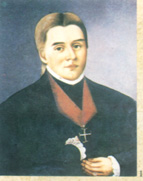
1 - Miguel de Arriaga Brum da Silveira, Magistrate of Macau (1st term of office from 1803).
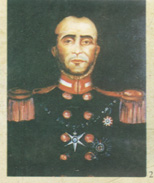
2 - João M. Ferreira do Amaral, Governor (1846-1849).
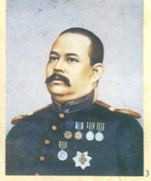
3 - Vicente Nicolau de Mesquita, the hero of the Battle of Passaleão.
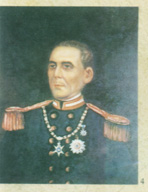
4 - Isidoro Guimarães, Governor (1851-1863).
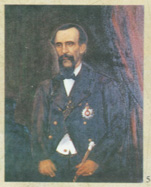
5 - Coelho do Amaral, Governor (1863-1866).
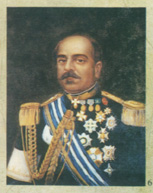
6 - Admiral Sérgio de Souza, Governor (1868-1872),
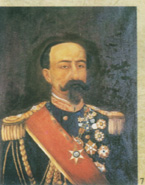
7 - Count S. Januário, Governor (1872-1874).
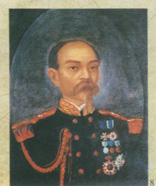
8 - J. M. Lobo d'Ávila, Governor (1874-1876).
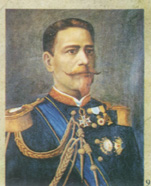
9 - Tomás de Sousa Rosa, Governor (1883-1886).
NOTES
(1) George Adolf Narciss: Im Fernen Osten - Forscher und Entdecker in Tibet, China, Japan und Korea, 1689-1911 (Tübingen, Erdmann, 1978), pp. 95-96. The other details regarding Scherzer's life are also contained in these pages. Karl Ritter von Scherzer: Reise der Österreischischen Fregatte Novara um die Erde (three volumes, Vienna, 1864-1868).
(2) Karl Ritter von Scherzer: Fachmännische Berichet über die österreisch-ungarische Expedition nach Siam, China und Japan (1868-1871), (Stuttgart, 1872). This is a technical work, describing the commerce and industries of the Asian countries visited.
(3) Narciss: op. cit., p.96.
(4) Narciss: ibid., p.100.
(5) Narciss: ibid., pp. 101-102.
(6) Narciss: ibid., p.103.
(7) Narciss: ibid., p.105.
(8) Eça de Queirós: A Emigração como Força Civilizadora (Preface by Raúl Rego, p.148). This book contains a copy of a report by Eça de Queirós written in 1874. On the same subject, see Mario Duarte: Eça de Queirós, Consul al Servicio de la Patria y de la Humanidad (Ed. Nascimento, Santiago de Cuba, 1959).
(9) Narciss: ibid., p.111.
(10) Narciss: ibid., p.112.
(11) Narciss: ibid., p.114.
(12) Narciss: ibid., p.127. On the exportation of Chinese labour, see Alexander Chung Yuan Yang: "O comércio dos 'coolie'" (1819-1920), Revista de História (Universidade de São Paulo, October-November, 1977), pp. 419-429.
Translated, by Marie Imelda MacLeod
* Portuguese Lecturer in the University of Kyoto; author and essay writer dealing with the Portuguese in the Orient and particularly in Japan.
start p. 27
end p.